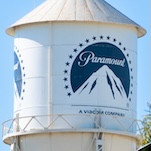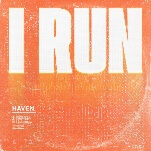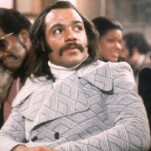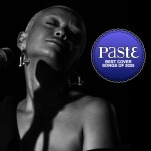Fear And Loathing In Las Vegas captured the fading myth of the rebel writer
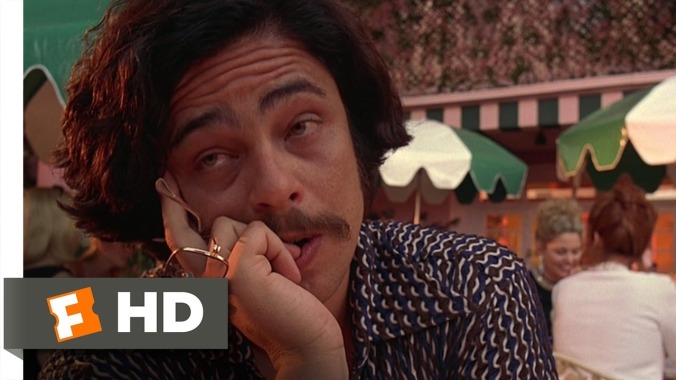
Time has been kind to the reputation of Terry Gilliam’s Fear And Loathing In Las Vegas, a film that stumbled into theaters 20 years ago today with vodka on its breath and dried vomit on its shirt and was quickly booted from the premises. Once derided as a slapdash, self-indulgent mess, it is now a mess with a Criterion edition, at least. More contemporary reviewers, like our venerable A.V. Club alum Scott Tobias, have come to regard Fear And Loathing as a fascinating (if still off-putting) anomaly in the otherwise milquetoast studio system, reminiscent of the daring, auteur-driven gambles of the late ’60s and early ’70s. To many, the movie has achieved a cult status on par with the worship that lingers for Hunter S. Thompson himself. Its reevaluation has certainly been helped by the fact that, thanks to DVDs, you can now watch it the way it was meant to be seen: at home, fucked up.
Two decades later, Fear And Loathing In Las Vegas is notable for another reason. It is a historical document, one that captures the mythical figure that is the “rebel writer” just before it faded completely from existence. It’s a myth that, upon the film’s release in 1998, proved sneakily influential—much as Thompson’s original “gonzo” journalism was on kids in the ’70s and ’80s—on a whole new generation of aspiring alcoholic typists, just in time for that whole profession to crumble and fall into the digital sea. Revisiting it now, you can’t help but be struck by how completely the myth has already faded. The rebel writer is as outmoded today as the cattle rustler, their very existence penned in and paved over by progress. There’s not much call ’round these parts for a Hunter S. Thompson anymore, not since they put in the content mill.
It’s easy to see why Fear And Loathing struck such a chord, in particular, with wannabe writers. Or more accurately, any moderately intelligent person who could string together a couple of sentences, enjoyed getting high, and detested actual work. Thompson made the role of writer seem less observer than outsider—even outlaw. He detested authority, and he had lots of eloquently sick burns for cops, politicians, and other bastards. He ingested copious amounts of drugs, as crucial to his process as his trusty IBM Selectric. He made a living off behaving as selfishly as possible, then writing cleverly about it. Perhaps most influentially, nothing was more important to Thompson’s stories than himself. His is the model for anyone who similarly believes that writing is a William Blake-like journey down a road of excess, leading toward 4,000 words of magazine-ready wisdom.
The films of the ’90s were filled with these kinds of articulate scoundrels who saw the world as one big joke, though a lot of them carried a gun. But if you didn’t want to kill someone, you could aspire to be Hunter S. Thompson.
That influence on people who saw the movie in 1998 can be partially owed to the fact that, even though it’s set in 1971, and brimming with Richard Nixon soundbites and old rear-projection footage from Vega$, Gilliam’s film doesn’t look like a period piece, exactly. Or, if it does, it’s one that most closely evokes that ’90s idea of the ’70s, an amalgam of cinematic signifiers that dominated the decade through Tarantino and Boogie Nights, then filtered through some heavy Lynchian dread that’s further spun off its axis through endless Dutch tilts and Gilliam’s own hallucinogenic absurdities. But for all its stoned-in-the-funhouse sprawl, the most fantastical thing about the movie in 2018 is the part that’s actually the most tethered to reality: the idea that any magazine would assign a writer to cover a motorcycle race or convention, put them up in fancy hotels, give them free reign to ditch the subject to write about their own bacchanals, then give them an expense account deep enough to buy a room service club sandwich, let alone rent a convertible and fill it with narcotics. I can’t get Univision to reimburse a plane ticket without filing three separate expense reports. Thompson might as well also be hunting for treasure in the Sierra Madre.
Fear And Loathing makes writing out to be an endless adventure. Thompson’s alter ego, Raoul Duke (played with immersive verisimilitude by Johnny Depp), is essentially Indiana Jones stumbling through a bad acid trip, contending with modern-day Nazis in the form of pigs and Hubert Humphrey voters, pulling himself through pits of writhing reptiles, and coming to similar conclusions about the world’s insolent disregard for its past. It’s structured like an adventure film as well: Duke is dispatched by “headquarters” with all the top-secret intrigue of a spy novel on an assignment that, before he’s even set foot in Vegas, he’s already loftily describing as a search for the American Dream. It’s played tongue-in-cheek, of course. The advice of Duke’s attorney, Dr. Gonzo (played with seedy, bloated gusto by Benicio del Toro), involves buying cocaine, Acapulco shirts, a very fast car, and maybe even a motorcycle, while also arming themselves “to the teeth,” and the juxtaposition of this against what is a magazine article is very much part of the joke. Still, it’s a joke steeped in what someone like Thompson could—and did—actually get away with, once upon a time.






















